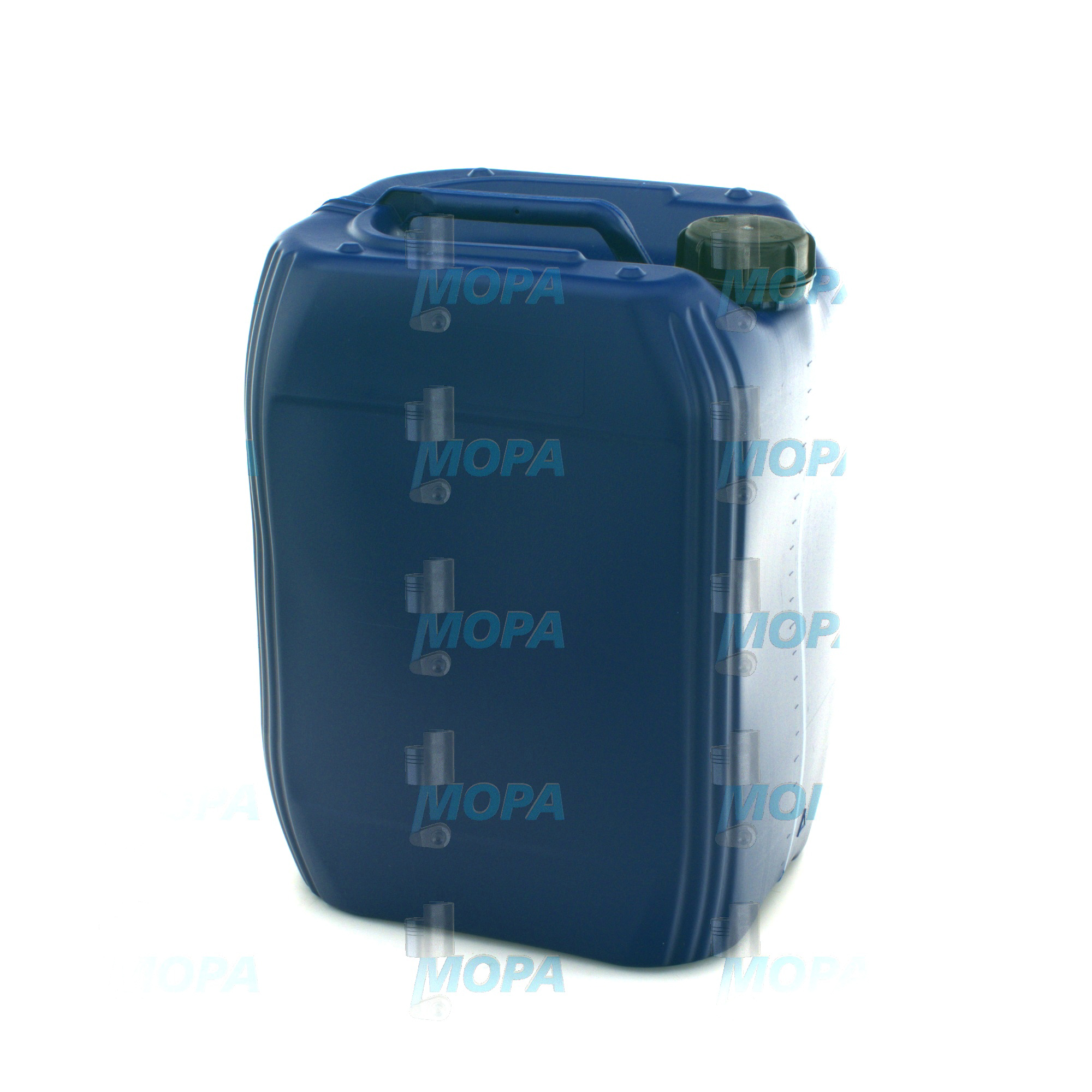ANTI FREEZE AGENT Liquids, chemicals and adhesives for reliable engine operation
Liquids, chemicals and adhesives are the unseen, high-impact components that keep propulsion and power-generation assets running. This article category includes coolants such as ANTI FREEZE AGENT, engine oils and additives, corrosion inhibitors, cleaners, bonding agents, and sealants used across assemblies. In a diesel engine or marine engine, these media circulate, protect, seal, and stabilize the mechanical system. They influence heat transfer, friction losses, component alignment, and leak-tightness—directly shaping performance, efficiency, and safety throughout the service life of engines.
Technical function of Liquids, chemicals and adhesives with ANTI FREEZE AGENT in diesel and marine engine systems
An ANTI FREEZE AGENT maintains the coolant’s freezing and boiling thresholds, ensuring stable thermal control in harsh climates and high-load conditions. In a diesel engine, the correct glycol blend and inhibitor package prevent ice formation in cold starts, suppress vapor lock at high temperatures, and protect metals from corrosion. In a marine engine, an ANTI FREEZE AGENT formulated for brackish and salty environments mitigates liner pitting caused by cavitation and shields mixed-metal circuits—cast iron blocks, aluminum heads, copper/brass exchangers, and steel liners—against galvanic attack.
Beyond the coolant, Liquids, chemicals and adhesives include engine oils with detergents to reduce deposits, fuel additives that stabilize combustion quality, and cleaners that maintain heat exchangers and intercoolers. Adhesives and sealants—such as anaerobic flange sealants, threadlockers, and high-temperature RTV—ensure gasket surfaces, fasteners, and housings remain secure under vibration and thermal cycling. Together, these media allow pumps, thermostats, sensors, gaskets, and housings to operate within intended tolerances.
Optimized chemistry is essential. Using an ANTI FREEZE AGENT aligned with OEM parts specifications ensures inhibitor compatibility with elastomers (EPDM, FKM), plastics (PA, PBT), and metals. This reduces swelling, embrittlement, or cracking of hoses, impellers, and seals, and sustains stable heat-transfer coefficients, which keeps cylinder head temperatures predictable—vital for emissions and fuel efficiency.
- · Stabilizes cooling across extreme temperatures
- · Protects metals from corrosion and cavitation
- · Preserves elastomer and seal integrity
- · Supports efficient heat transfer and fuel economy
- · Reduces deposit formation and component wear
- · Ensures leak-tight joints with specialized adhesives
Importance for engine operation: why Liquids, chemicals and adhesives matter
Inadequate or degraded media compromise reliability fast. Coolant with low ANTI FREEZE AGENT concentration risks freezing, cracking jackets and radiators, and causing pump damage. Overheated coolant accelerates oxidation, aeration, and scale, which insulates heat-transfer surfaces and elevates thermal stress on heads and liners. Incorrect inhibitor balance can trigger corrosion, liner cavitation, and sludge that obstructs narrow passages in EGR coolers and charge air coolers.
Adhesives and sealants that are mismatched for temperature or fluid exposure can lose bond strength, leading to micro-leaks at flanges, oil weeps at covers, or loosening fasteners—events that amplify vibration, contaminate lubricants, and increase unplanned downtime. Fuel system cleaners and additives chosen without material compatibility can affect O-rings and pump seals, causing hard starts or pressure loss.
Routine monitoring is essential: verify glycol concentration with a refractometer, check nitrite/molybdate levels where applicable, and control pH and conductivity. In marine engine service, watch chloride ingress and follow flushing intervals to avoid crevice corrosion. Keeping Liquids, chemicals and adhesives within specification is one of the most cost-effective ways to extend overhaul intervals and preserve engine efficiency.
Advantages of OEM spare parts suitable for Liquids, chemicals and adhesives
Pairing the right media with OEM spare parts is critical because the cooling, lubrication, and sealing systems are engineered as integrated sets. Pumps, thermostats, heat exchangers, hoses, sensors, and caps are calibrated to specific fluid chemistries and viscosities. When an ANTI FREEZE AGENT is matched to the metallurgy and elastomers defined for OEM parts, the system maintains stable flow, accurate temperature regulation, and long seal life.
Benefits include proven material compatibility, dimensional precision, and repeatable performance under load. OEM spare parts suitable for Liquids, chemicals and adhesives are validated against the thermal expansion, shear forces, and chemical exposure they will meet in service—on both diesel and gas engines. This alignment reduces lifecycle cost by limiting premature seal shrinkage, impeller erosion, thermostat sticking, and sensor drift, while improving uptime and safety across engine rooms and power plants.
ANTI FREEZE AGENT OEM parts compatibility and material performance
Consider common interfaces: EPDM coolant hoses, silicon-based gaskets, stainless and bronze pump components, brass exchangers, and NBR/FKM shaft seals. An ANTI FREEZE AGENT for a marine engine must be compatible with these substrates, resist aeration, and control foaming to protect pump bearings. In a diesel engine, proper inhibitors curb solder corrosion in radiators and prevent hot-spot scaling around exhaust valve seats. OEM spare parts, combined with compliant Liquids, chemicals and adhesives, keep these interfaces stable across thousands of operating hours.
MOPA: fast, secure supply of OEM parts for ANTI FREEZE AGENT diesel and gas engines
MOPA is a reliable partner for OEM spare parts in the category Liquids, chemicals and adhesives. We support shipowners, operators, and maintenance teams with rapid delivery, rigorous quality control, and secure documentation for parts that interact with ANTI FREEZE AGENT, oils, cleaners, and adhesives. From coolant pumps and thermostatic elements to hose sets, caps, exchangers, and sealing kits, we source to specification and ensure seamless fit and function.
Our expertise spans diesel and gas engines used in marine propulsion and power generation. MOPA provides technical cross-referencing, material compatibility guidance, and streamlined logistics—so your engine room receives what it needs, on time, with traceable quality. This helps restore performance quickly, stabilize maintenance schedules, and reduce risk in critical operations.
Conclusion: ANTI FREEZE AGENT and Liquids, chemicals and adhesives
Liquids, chemicals and adhesives—anchored by a correctly specified ANTI FREEZE AGENT—are fundamental to thermal stability, corrosion control, sealing, and overall engine efficiency. Aligning these media with OEM spare parts suitable for the application delivers durable performance, reliable operation, and optimized lifecycle costs.
With MOPA as your partner for OEM parts in this category, you gain speed, quality, and security across the supply chain—keeping diesel and gas engines productive and protected in every operating environment.



